“The world is a book, and those who do not travel read only a page.”
~ Saint Augustine
The Challenge
When you’re on a healing diet, what you eat is extremely important. It’s the difference between living well with autoimmune disease, and suffering with autoimmune disease. The stakes are high, and it’s easiest to do when we’re at home, in our own kitchen, surrounded by the food we carefully sourced, and the meals we prepare.
But we can’t stay homebodies forever. There’s a whole world outside our door, and if we never leave, we let our disease isolate us from a big part of living. Travel can lead to relaxation, adventure, or time with loved ones who live far away. All of these experiences are worth the effort. Last year, I took a number of road trips while on the paleo autoimmune protocol (AIP). This year, I traveled by plane. Each mode of travel has its own benefits and challenges. When I traveled by car, I took a lot more food with me, but had more travel time. Traveling by plane was speedier, but I was forced to simplify and do without some of my household staples. I managed to stay on my diet on every trip and experienced no serious flares. Here’s how I did it.
The Plan
I had two trips planned this summer. One to go visit my parents and siblings who live on Cape Cod. One to go visit my stepchildren and grandchildren who live in Kansas. These were my first flights since having rheumatoid arthritis, and I was nervous.
- Sleep and Flight Times: In the past, I would have booked an early morning flight, stayed up late packing, skipped breakfast, and hit the airport on a few hours of sleep. Now, that’s not a choice I’m willing to make. Sleep is too important. Instead, I chose afternoon flights that gave me time to get a full night’s sleep and eat a healthy breakfast at home.
- Food for the Plane: My flights were short – under 3 hours. So, I packed a simple lunch: a pre-cooked hamburger (flavored with herbs), 1/2 an avocado sprinkled with salt and lemon juice, and some grapes. I also packed a fork wrapped in a napkin. Since I live a 2-hour drive from the airport, I put my lunch in a little cooler with an ice pack for the drive, and then transferred it to my backpack when I arrived at the airport. I also packed some non-perishable foods, in case my flight was delayed. I brought along some Epic Bison Bars, Wild Zora Lamb Bars, and Paleo Angel Power Balls. If you have long flights, you’ll want to eat your perishable food shortly after takeoff, and save the non-perishables for later. A waited to buy bottled water until after I passed through security. TSA rules allow you to bring solid food on the plane, but they restrict liquids. Be aware that anything that falls between these two categories is considered a paste and might get confiscated (like guacamole or jam). The good news is that freezing pastes and liquids makes them solid, and TSA usually allows anything frozen through security. Note: rules may vary on international flights. Update: Thanks to a reader recommendation, I now always travel with a carry-on cooler.
- Grocery Shopping Upon Arrival: Before leaving home, I found the nearest Whole Foods to each airport, and planned to shop for my essentials on the way to my family’s house. The plan was different for each trip. On Cape Cod, there’s a fish market and grocery store near my parents’ home. My parents eat their main meal mid-day, and we agreed to prepare AIP-friendly seafood and vegetables. Everyone makes their own breakfast and dinner, so I planned to have meat and veggie dinners, eating the leftovers for breakfast. The schedule was going to be relaxed, so I would have time to source food daily. The only things I needed at Whole Foods were some things I couldn’t find at the local grocer: real olive oil, Herbamare, raw sauerkraut, raw kombucha, and dinner for my first night (I made a hearty salad from their salad bar). In Kansas, life was going to be busy. Lots of people, lots of activities, and I wouldn’t have time to shop for food every day. It also didn’t feel reasonable to ask everyone to eat AIP-friendly meals. Instead, I bought a bunch of food to batch-cook the first night. Then, the family ate the way they always do, and I just heated up my own food each meal and shared their table. For these reasons, my grocery list at the Kansas Whole foods was longer: in addition to the items mentioned above, I bought enough meat and veggies for all my dinners (and leftover breakfasts); salad ingredients for lunch (mixed greens, raw veggies, avocados, and canned salmon); and fruit for snacks. I think the key to meal planning while on vacation is to keep it simple. No fancy recipes, no lengthy ingredients, just high quality food that’s easy to prepare and will keep you from being hungry.
- Food Planning for Arrival Home: I planned my return flight the same way: I booked an afternoon flight, ate breakfast with my family, packed a similar lunch (cooked chicken, sliced carrots and blueberries), and had some non-perishables as backup in case of plane delay. The other thing to keep in mind is dinner when you get home. If you’ve been gone for a while, your fridge is likely to be empty. The week before I left, I simply doubled a couple of recipes, and froze the leftovers. When I arrived home, all I had to do was reheat my homemade frozen meals until I had time to go to the grocery store and restock my home.
- Leave Perfection at Home: Traveling well on a healing diet is all about balance. You need to plan enough to avoid autoimmune flares, while not getting obsessed over every detail. The goal is to have fun and avoid stress as much as possible. For me, that means avoiding my main triggers (grains, legumes, dairy and nightshades). But I don’t worry about whether my meat is grass-fed or my vegetables are organic when I’m on vacation. I eat what’s available. I’m also not going to be eating as nutrient-dense. There’s going to be a lot more chicken and burgers, and a lot less organ meat and bone broth. Simplicity rules, and I can make up the nutrient-density when I get back home.
The Reality
So, you saw my plans. How did my trips actually go?
- Cape Cod: Honestly? It was perfect. I felt like the whole trip had anti-inflammatory benefits. The weather was ideal – sunny and in the 70’s. My parents live a mellow life. I took a walk by the beach while they slept late each morning, then drove to the fish market to buy fresh seafood for lunch. My mother and I cooked together, something we both love to do. After lunch, I hung out with my family: Mom, Dad, siblings, nieces and nephews. In the late afternoon, there was usually an hour or two of solitude where I’d read a few chapters of a novel (purposely avoiding the internet). In the evening, I’d go to the local grocer to pick up ingredients for an easy dinner, making enough to have leftovers for breakfast the next day. At night, my mother and I played cards until I got tired, and then I went to bed early and slept well. Is it any wonder I came home feeling fabulous? Between the relaxation, visiting with people I love, time off-line, and a high-omega diet, it was a healing trip.
- Kansas: I had a wonderful time, and am so glad I went, but there were some travel stresses that took their toll. I didn’t flare, but I came home with more stiffness than usual and some minor soreness. Unfortunately, the way my body works, it takes a few weeks for the extra inflammation to go away. What happened? First, the good: I love my stepkids and grandkids, and spending time with them is always a joy. I got to play basketball and pickleball with my teenage grandsons, and paparazzi to my one year-old granddaughter, who is in constant motion. (I’m proud to say that after taking 200 pictures, I got a few that weren’t blurry!) I had some great talks with my stepdaughters and son-in-law, and spent some quality time with my husband as well. However, there were challenges, too. Kansas is HOT! A day at the water park was bliss for the grandchildren, but unfortunately inflammatory to me. Our guest bed was an inflatable mattress: comfortable at first, but hard on the joints as the night wore on, leading to restless sleep. Lastly, while I prepared all my own food, I also helped make dinner for the family. Here’s the problem – if food gets on my fingers when I cook, I lick my fingers. It’s an unconscious habit I can’t seem to break. At home, I never make food I can’t eat, so this isn’t a problem. On vacation, I was reheating mashed potatoes for the family dinner – nightshades – and I licked my darn fingers! So, it’s no surprise I came home with more inflammation than when I left. I don’t share this story to discourage anyone from traveling. I’m glad I went. I love my family too much to stay home. Life (and traveling) isn’t always perfect, but that doesn’t mean it’s not worthwhile. Nothing on this trip caused a painful flare. The extra inflammation is a little bit uncomfortable, but in a few weeks it will be gone, while the wonderful memories from the trip are mine forever.
- Do you travel on a healing diet? Tell me about your experience!
Other Travel Resources
Credit: image at top of page from Axel Péju.

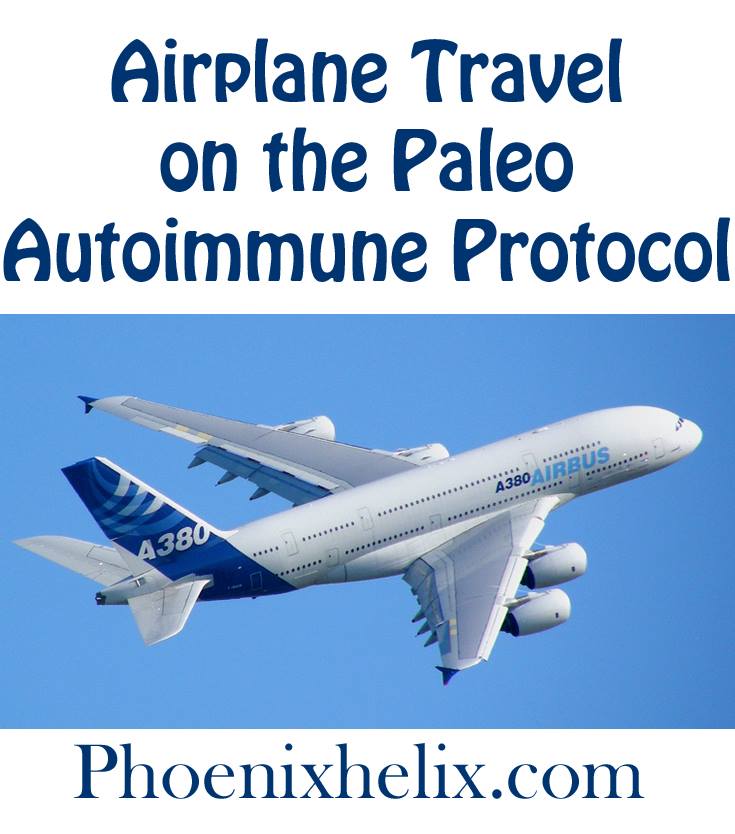
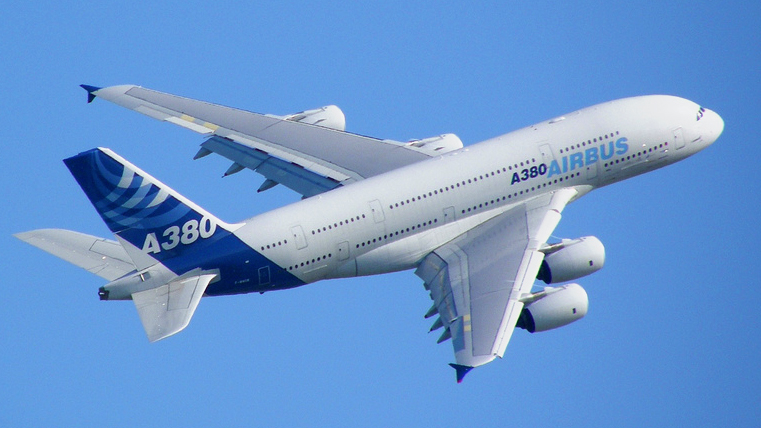
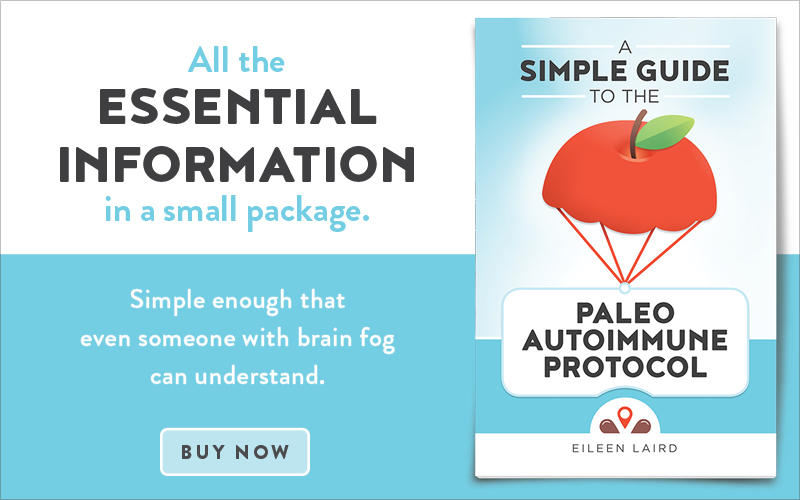
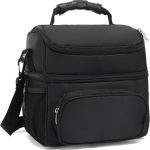
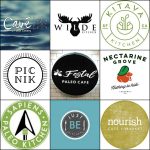
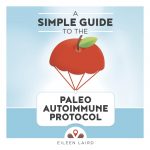
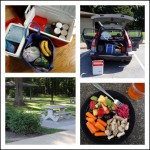
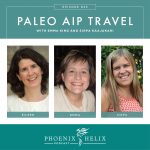
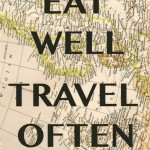
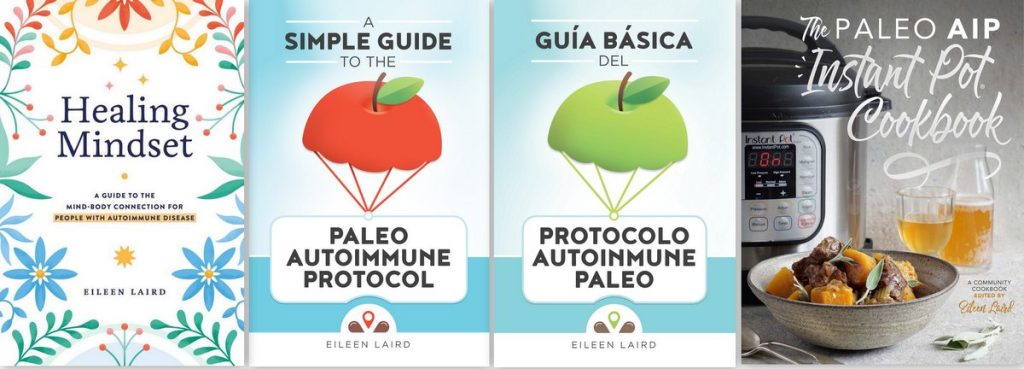
Hi Eileen,
Per your website link, I tried Paleo Angel power balls. Oh my! What a treat. Cranberry orange is sooo good. My question is this. Desserts are usually mentioned as being kept at twice a week at the most. In months on AIP PALEO, with FODMAP, I have not had any sugar in any form until the power balls with a touch of honey. Are these considered dessert or does the protein, fat, etc. ratio take them out of the realm of desserts? We are planning a trip soon and I don’t want any slip ups on this diet. Thanks.
Hi Barbara. When it comes to dessert, I often indulge a little more on vacation. It keeps me from being tempted by typical junk food, and I think the Paleo Angel Power Balls are a great choice. Like you said, the protein and fat balances the sugar, so they satisfy that sweet craving but don’t result in a sugar crash. Instead, I find that they satiate and help me maintain my energy when I travel. There’s only 3 grams of sugar per power ball (in the form of natural honey). That’s only 3/4 of a teaspoon – very reasonable. I agree with you on the Cran-Orange, by the way. It’s my new favorite!
I can’t remember who suggested an “E bag”, but I got one on Amazon, and have never regretted it! It is a food bag that is commonly purchased by flight crew. It has an insulated section, and lots of pockets to hold food items. I pack some frozen foods (plantain pancakes are great) which serve as ice packs. I also considered a bag of frozen vegetables, too. Then, I pack all the cold foods in the insulated portion, and then the non-perishables on the top. It has a strap that fits around the “periscope” handle on a travel bag, and one that you can wear on your shoulder. I LOVE this bag, and would recommend it to anyone traveling. I also used Paleo On The Go for a ten day trip to Alaska. They are amazing!!! Food delivered and ready to pop in the microwave or ovens the day I got there. Food arrived in two days (frozen)!!
Nina, thank you so much for sharing your experience. It’s perfect timing, because I’ve brought Paleo on the Go meals with me for road trips, but haven’t yet had them shipped to my destination when traveling by plane. However, I was planning to do so this fall when my husband and I travel to Glacier National Park. I’m so glad it works as well as I hoped! And I love your tips for the eBags Cooler – how great that the plantain pancakes work like ice packs!
You said that EPIC Bison bars are AIP approved because the others have nightshades. I think many do, but the bacon beef does not (not sure about the others). I thought what made it not AIP was the celery powder. Could you clarify this for me? I would love to be able to have them. Thanks.
Hi Bree. Celery powder is fine on the AIP, which is nice, because this makes more brands of bacon AIP-friendly. You are also right that EPIC has added a few more AIP-friendly bars to their offerings since I originally wrote this post, and there’s also a new AIP-friendly lamb protein bar by a company called Wild Zora. You can find links to all of them on the notes for my recent Paleo Travel podcast, as well as in my blog store.
Wanted to let you know that it is possible to take liquids with you on the plane – especially helpful if you want smoothies or soup in a thermos. All you need to do is pull the thermoses out of your bag and tell the TSA person that you have a medical exception for liquids. They will ask you to open the thermoses and will hold a tiny strip of test paper over the top (it doesn’t touch the thermos or liquid). That’s it. Only one time have I ever been asked WHY I have a medical exception (and that’s about of about 100 times). I told them I have severe food intolerances and am on a mostly liquid diet. And that satisfied the guy. I also carry a card with me detailing all the foods I can and cannot eat – so I could show that if they question me about why I have liquids. You can check the TSA website for more information about traveling with liquids. Once I figured that out, it made plane travel sooo much easier.
Excellent tip! Thanks so much for sharing, Jennifer.
Thanks for the tips on this post. I’m 24 days into AIP and hope in a couple of weeks to start thinking about reintroductions as I feel so much better already. Next month I’m going on a mediterranean cruise and because it was considered a last minute booking (less than 90 days) they can’t guarantee special diets. My plan for the flight and before getting on the boat is dried fruit, plantain chips, tuna and coconut butter brought from home. On excursions I’m planning on a banana (taken from breakfast buffet), some coconut butter and epic bars and on the ship I hope to be able to get enough safe food….boiled shrimp, grilled fish, roast beef station, steaks,salads fruit and veggies. I’ve taken the same cruise twice before while eating gluten and dairy free and managed not to react too badly, so I’m hopeful. Plus, really looking forward to the change of scenery and pace of life which I know will be healing. The first 2 things I want to try and reintroduce are black pepper and eggs as I know these will be the hardest to avoid. I know these aren’t the normally recommended order of reintroductions. Any thoughts of something I’m forgetting or not thinking about.
Bethany, I think that sounds like a great plan. As for reintroductions, both black pepper and egg yolks are Stage 1 reintroductions (the first recommended), so you’re good there. And while egg whites are problematic for some people, I went ahead and reintroduced them after a successful yolk reintroduction myself, because I wanted to know, one way or the other. The only mistake would be to reintroduce whole eggs before yolks. I don’t know if you saw I wrote an ebook to help guide people through the reintroduction process. If you’re interested, you can find it here: http://www.phoenixhelix.com/2014/04/27/introducing-my-e-book/
Thanks for the great tips! Due to fatigue, I had stopped travelling before I started my restricted diet, but now I’m heading out of town for a family wedding and it has me nervous. I love your tips, and knowing how to prepare in advance is definitely helping me feel a bit calmer about the whole thing.
I’m so glad. Have a beautiful time at the wedding, Julie.
I have found a few things help me (in addition to your advice and others… such as getting an aisle seat to walk around etc.) I swell A TON while flying. A simple 1 1/2 hour flight flares me up, even with Ted Hose. Immediately after landing, as soon as I can… I “Ground” for at least 45 minutes up to an hour. This greatly relieves the swelling. Grounding helps me keep inflammation down to a
minimum, even when not flying. It’s wonderful! Whenever there is a beach- YAy… big bonus! The water and earth/sand combo instantly provides relief whereas it takes almost half an hour on just grass alone. Also, I always ship a small to medium package of items I need or want to my son’s home or wherever ahead of time. A small ziploc of say- Herbamare, or bags of herb tea, etc etc. saves me from buying a full package when I arrive. I have been able to include some homemade bars and special “me” ingredients. And then when I get to my destination… my box of goodies and necessities are waiting for me.
I love these tips! Sending yourself a care package is genius. And I must admit, I don’t do the earthing technique often enough. Do you lie, sit or stand on the ground when you’re trying to alleviate the swelling?
Did you know that putting your bare feet on the metal leg of the chair in front will ground you? Also legs above head is great to alleviate swelling.
Great tips, Leah! Thanks for sharing.
Hi,
Thank you for your wonderful site. It has helped me a lot. I’m on AIP since 19 weeks now. SCD before that, trying to heal my Ulcerativ colitis and adrenal fatique.
I recently went on a conference with my job to Barcelona and stayed for 3 days. It’s a 3 hour flight from Stockholm. I tried to prepared the staff that hosted the conference with Mickey Trescotts meal plans. They are perfect to have! And the night before I baked a lot of carrots in the oven to bring with me. I put them in the freezer over the night. The next morning I prepared one box of the frozen carrots with ice blocks in the suitcase. I also put cans of tuna, avocados and banans.
I had breakfast at home, and took lunch in a box and fruit with me in my carry-on bag. I eat the lunch at the plane, and still had some snack left. I arrived to Barcelona in the afternoon, about 7 hours after leaving Sweden. But when I got to the hotel, my carrots where almost still frozen, and I just put them in the mini bar. So every time I felt I need a snack I could have cold carrot and some tuna. ( No it wasn’t delicious, but it worked out fine ) For breakfast at the hotel I had eggs, some vegetables and fruits. I have tried eggs at home , just to see if I could eat them for this trip, and it seemed to work for me. For lunch they had prepared fish with vegetables – great. And in the evenings at restaurants I asked for plain grilled fish with vegetables I could eat. This is a great experience for me. I know that I ate a lot more fruit than I should, but I had to keep It simple and not to much struggle. In some months I have a bigger challenge, I will fly to Australia and that’s a 24 hour flight. I know it will be a tough, but I cancelled this trip last year because of my UC, and this year I really want to go. I hope I can manage the flight with a lot of ice blocks in my handbag And a lot of tips from you Eileen.
I’m so glad your trip went well. Thanks for sharing your tips, and I wish you a wonderful time in Australia!
Thank you for this post, Eileen! I have just returned from the States on what – thanks to delays – turned into a 78 hour journey. I’m in my second month of AIP, and I have to admit I fasted more than I ate anything, simply because there was nothing available and I was unprepared. On the long overseas hauls (we cross the dateline back to New Zealand and consequently fly through an entire day) sitting in those economy class seats for 15 hours can be very hard on joints. Plus, I do NOT sleep on planes, so ended up flaring badly due to lack of sleep.
My advice to add to yours:
(1) Get an aisle seat so you can at least move around regularly and keep your joints loose, if that is an issue for you.
(2) If you CAN sleep, make the most of it to counter the stresses of air travel. (In this case a window seat is more comfortable.)
(3) Book your connecting flights FAR apart from each other. Mine were 4 hours apart and I still missed three of my four flights, but not before running from one side to the other in TWO airports and reaching the ‘Boarding Closed’ sign. Next time I will even consider breaking the trip in half, overnighting in a hotel and getting a proper night’s sleep.
(4) Pushing yourself to make connections after delays is just SO. NOT. WORTH. IT. I ended up in so much pain I couldn’t walk by the end of that day and my emotions were shot through. And: I still missed my flight. It may sound like a good idea to ‘try your best’ but it is NOT kind to an inflamed body. Rebooking to a later flight is, in this case, a kinder option.
(5) Learn to expect that the best laid plans WILL change. And let it go. My checked luggage didn’t arrive back in NZ with me. But by that time I was fairly philosophical about life 🙂 and actually expected it after all the flight changes. The upshot? I got the friendliest, most efficient service and my luggage delivered to my door the next day. The gift of remaining calm and accepting about that I consider to be a blessing to my body!
(6) Thank yourself for being so courageous that you could make it through what is often even to fully healthy people an uncomfortable experience! 🙂
Sometimes the best lessons come from the hardest experiences. Thanks so much for sharing your wisdom, Jeanne. I wondered how I would manage a very long international flight. Your idea to break up a long journey with an overnight layover sounds like a great idea! Even a couple of days might be nice, if we could pick a nice locale. I hope your flare passes quickly, and your next travel experience is more relaxed in every way. Gentle hugs to you.
When possible, I plan ahead and have family pick up organic chickens. I roast both right after arriving so that I have lunch (chicken salad) and dinners (roasted chicken) for many days. I’ll stop at gorcery store/Walmart and pick up fresh fruit for breakfast (I bring a personal blender for making smoothies).
Becuase of previous travel articles I’ve had the courage and will power to stay on my grain free diet. AIP will begin soon. Thanks again for another great article!
Great tips, Connie! Thanks for sharing.
I see that you listed Epic bars. Would those be considered safe to eat for someone on the elimination phase if AIP? (I see they have lactic acid.)
Yes. The lactic acid isn’t dairy-based. Sarah even lists these particular Epic Bars on her “Paleo Approach Approved” list.
Thank you for your quick response! Presumably it would be derived from corn or soy or something. that’s ok? (lol i REALLY want to buy these but also don’t want to undo 3 months.)
I think this is a decision no one can make for you. A number of us in the AIP community eat these Epic Bars with no negative reaction, including Mickey Trescott from Autoimmune Paleo who has an extreme sensitivity to soy. I avoid soy, but is lactic acid grown on soy a problem? My understanding is that the fermentation process metabolizes the food proteins (whether they are soy or corn or another vegetable) so that none remain in the lactic acid itself. However, if you know that this ingredient is a problem for you, honor what you know to be true. All I can tell you is that the Epic Bison Bacon Bar is indeed AIP-approved. Avoid the other bars though (turkey, lamb and beef) because they contain nightshades.
Cool! Thanks very much. I don’t know if I am particularly sensitive to soy/corn so I will try these! (And am excited about the prospect of having an easy snack).
Great article. I’ve always wondered what I would do if I had to fly on a plane while on the AIP diet. What do you do for long flights – like international over several continents? I’m sure it’s not practical to pack meals but only snacks.
Hi Kathy. Browse through the travel links I included at the end of the article. The Facebook thread particularly has some great advice for long flights. Plan on your carry-on bag being 100% dedicated to food, tucking a book or ipod or other entertainment in your purse. As for the food, one woman brings a numerous perishable meals, but she freezes 1/2 the food and keeps it frozen with disposable ice packs until she goes through security. That way, it defrosts over the course of the flight(s) and she can eat it after several hours. Other people practice intermittent fasting during the flight.
Thank you, Elaine. I feel ready should I need to tackle this.
Sorry, Eileen! My bad.
I’ve recently been on the plane while in AIP. I brought a cooler with me and used small bags of frozen peas as ice packs. I brought some seasoned Shredded Beef (from a roast in the slowcooker), grapes, carrot and celery sticks, salads in a bag (shredded red cabbage, carrots, and kale with acv, olive oil and herbamare), plantain crackers and a mushroom pate, aip pesto zoodles with chicken cilantro meatballs, and baggies of coconut ribbons and raisins. Oj, I had an avocado too. I brought plastic cutlery and napkins.
It was good for 2 whole meals, snacks and leftovers. I’d take my meal out of the cooler 20 mins before I wanted to eat because I found the meat treated better at room temperature than cold.
I invested in an ebags crew cooler II and it counted as my personal item. I put my Wallet and boarding pass in the front pocket, my purse was in my. Backpack, the top had my non perishables and cutlery. I suggest using double bagged ziploc instead of containers. I also froze the beef because I knew I would eat it later.
This is awesome. Great ideas for longer flights! Thanks so much for sharing the details, Sue. I hadn’t heard of a crew cooler before, so I did a quick internet search. For anyone else interested, here’s a link: eBags Crew Cooler. I think that just made it to my wish list.